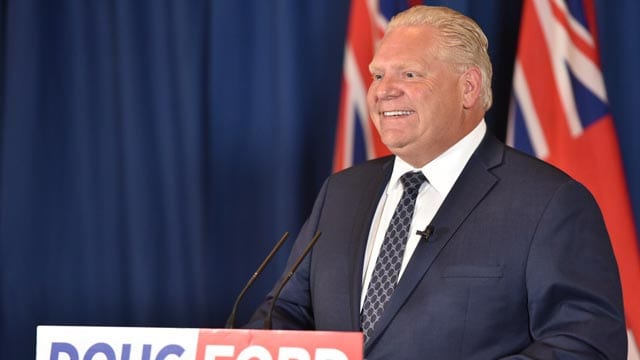

Ontario Premier Doug Ford refused Thursday to commit to a moratorium on youth aging out of the child welfare system during the COVID-19 pandemic moments after saying he will spare no expense to protect the vulnerable.
“When it comes down to it, within our fiscal restraints, within our fiscal capacity, I will not spare a penny to make sure we support the people of this province. We are going to continue to make sure everyone is supported right across the province,” said Ford in response to a question from APTN News asking why he hasn’t called a moratorium.
“I will spend every single penny to make sure we protect the people of this province.”
APTN immediately followed up: So you will call a moratorium for these children?
“We will refer that to the people of social services, our minister. Everything is on the table, absolutely everything. We are reviewing every single line item. There is a tremendous amount of need out there right now,” Ford responded, adding again whatever it takes within the province’s fiscal restraints.
The ministry of children, community and social services is well aware of this problem.
On Monday it told APTN it was working to implement a solution, yet stopped short of saying it will seek a moratorium. On Tuesday it said a solution means access to supports and resources youth need, but, again, wouldn’t call for a halt of kids losing their supports.
Advocates have been calling on Ford to halt youth, aged 18-21, from transitioning out of care during the pandemic.
Their response to Ford’s non-commitment didn’t split hairs.
“Disappointing and potentially deadly,” said Dr. Kim Snow, a professor at Ryerson University and a leading expert on child welfare in Ontario.
Youth in care age out at 18 or 21, depending on what type of care they are receiving, which can be housing and financial support.
The supports end on their birth date, such was the case for a First Nations man in Ottawa who aged out on March 1. His last payment was Feb. 15.
APTN has followed his story since he was dropped off at the Mission shelter in Ottawa shortly after his 18th birthday because his group home kicked him out.
Funding supports allowed him to stay above water after a horrific life in group and foster homes.
APTN asked him if he has had any contact from his worker since this pandemic began.
“Absolutely nothing,” he said.
Luckily, he has support from his girlfriend’s family right now.
There are “no more words” left to describe the Ford government’s approach to child welfare said Irwin Elman, the former child advocate for the province until Ford closed his office in early 2019 and blended a water-downed version of it into the ombudsman office.
“They seem more interested in the price of hand wipes at a Toronto store than they are in the wellbeing of youth,” said Elman. “To stop aging youth out would be negligible.”
Ford touted his so-called $17-billion economic relief package his government announced Wednesday to fight COVID-19,j that includes “expanding access to emergency assistance” for people in poverty.
APTN asked the federal government if it was going to step in for on-reserve youth who age out, as the feds cover 93 per cent of the child welfare funding in Ontario.
“The decision to implement a moratorium is within provincial and territorial jurisdiction. This would then be implemented by the First Nations child and family services agencies as they follow their respective provincial and territorial child and family services-related legislation,” said Indigenous Services Canada in an emailed statement.
“ISC remains committed to working with parties to ensure that children aging out of care have access to programs and services to which they are entitled.”
“Children aging out of care also have access to existing supports needed to make a positive transition. For example, the Assisted Living Program provides funding to assist eligible individuals, including young adults out of care, with in-home care, adult foster care and institutional care.”
Advocates argue these young people shouldn’t have to try to secure new funding during the pandemic.
Ontario’s economic package also includes approximately $70 million to provide personal protective equipment to residential facilities, including for children and youth in care.









